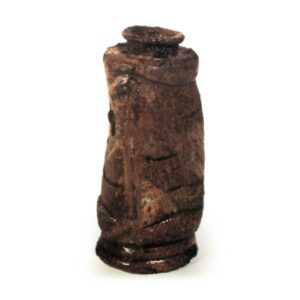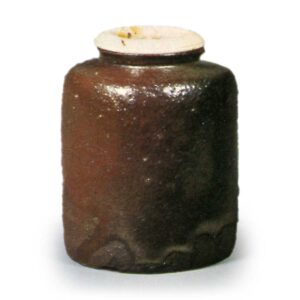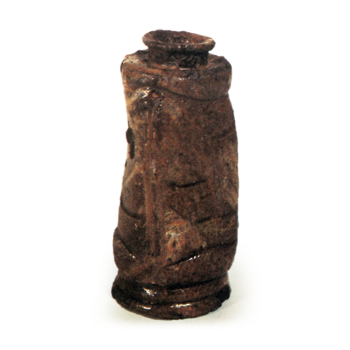

Tamba-yaki refers to the Onohara, Kamitachigai, Shimotachigai, and Kamaya kilns in the town of Imada, Taki County, Hyogo Prefecture (Tamba Province). Of these, the Onohara kiln began during the Tensho and Kan’ei periods (1573-1644), and had a craftsman named Kichizo. Works made before the Momoyama period are called “old Tamba. After the Kan’ei period, the pottery produced according to the taste of Kobori Enshu was called Enshu Tamba, and the kiln was moved to Tachikake in the Horeki period (1751-64). The name “Tachikki-yaki” is more commonly used than “Tamba-yaki” for later products. The “Honcho Novelogue of Ceramics” describes Ko-Tamba and Enshu Tamba as follows: “Ko-Tamba is well made, with blue and white medicine and rusty coloring, and the clay is a light reddish color and is fine and hard. Tamba has glazes similar to those of Kosedo or Karatsu. Enshu Tamba ware is very similar to Zensho ware in glaze color and production, so since ancient times it has often been confused with Zensho ware. (Tamba-Sho-Ko” (Manpo-Zensho, “Toki Koh,” “Tamba-Sho-Ko Kajo,” “Toki Koh Appendix,” “Chado,” “Honcho Toki Wansei,” “Kogei Shiryo,” “Kanko-Zusetsu,” “Taisho Meiki Kan”) *Tachikugaimatanpal: A bowl used in Korean soba and soup-and-bread shops, etc., and is written “yubachi” (“hot water bowl”). The character “yu” means “soup. The Japanese word “don” is probably a corruption of “tanpal. (Joseon Ceramic Name Study)



